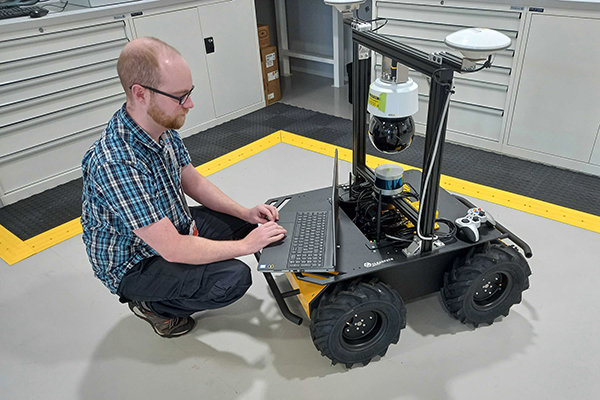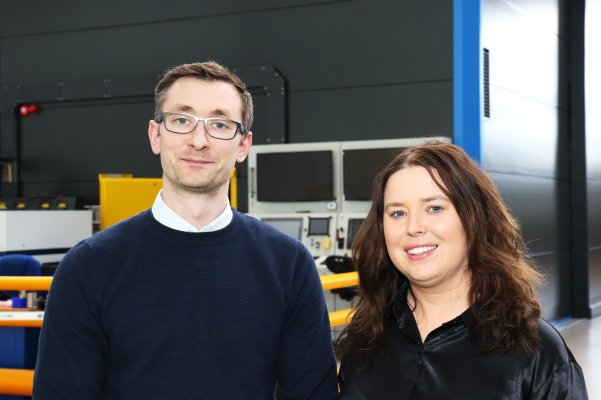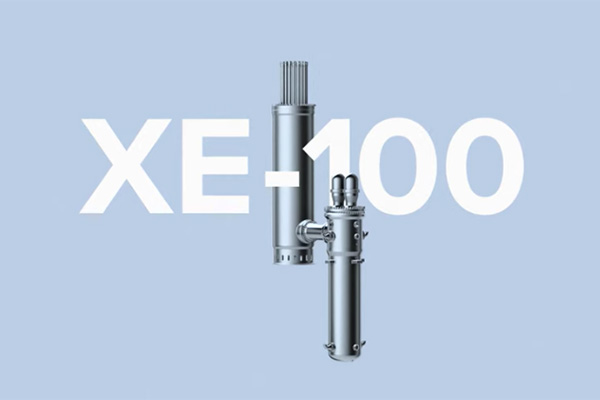The latest addition to the Nuclear AMRC Midlands team sounds like the ideal candidate for a demanding job – intelligent, flexible, rugged, and thrives in a challenging environment.
The Derby-based team have bought a Husky unmanned ground vehicle (UGV), a robotic development platform produced by Clearpath Robotics in the US, to help tackle a range of nuclear industry challenges.
In recent years, UGVs have been deployed in a variety of civilian, industrial and military applications, to work in hazardous or unpleasant conditions, or carry out tasks which are too risky, difficult or dull for humans. But so far, they have not been widely used in the nuclear sector.

The first challenge for the Nuclear AMRC’s Husky (pictured above with senior technician Jack Powell) is developing its capabilities for safely patrolling a potentially hazardous site, to monitor radiation levels and collect environmental data.
“For the nuclear industry, the UGV has the potential to provide real-time location measurement and mapping of radioactivity with isotope identification,” says Dr Ali Imam Sunny, technical lead in the Nuclear AMRC’s control and instrumentation group. “In the near future we will work on routine and repeated monitoring of the site to actively provide data, to highlight anomalous changes in radiation as well as other anomalies within the ground with the help of ground-penetrating radar and other sensor elements.”
The project, funded by the High Value Manufacturing Catapult, aims to develop an intelligent control and guidance system for unmanned logistics vehicles, based on proven artificial intelligence concepts.
The Derby-based team will integrate a selection of advanced sensor systems to the Husky platform, including light detection and ranging (lidar) and gamma ray spectrometers, along with satellite navigation and positioning devices.
The researchers will also develop software for combining radiation intensity and geolocation data to create a live map of radiation levels, and test the system in a safe environment before the Husky is let loose on a real nuclear site.
“Our current research focuses on generating simulations of the kinds of environment in which a UGV might be deployed, to assess the efficiency of the system in various scenarios,” Sunny notes.
As well as monitoring operational and decommissioning sites, the Husky could have a role to play in the development of new reactors. The team are planning to integrate advanced laser scanning equipment which can profile complex structures during the production and assembly of modular reactors, to support the development of digital twins.




